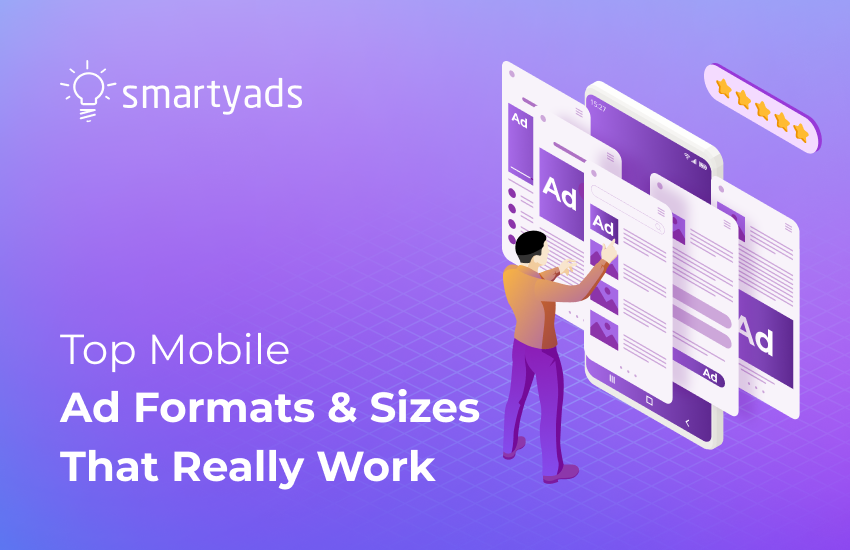One of the many disruptions the COVID pandemic triggered is connected TV viewing. No doubt, CTV viewing was on a gradual upswing before the pandemic, but COVID accelerated its adoption, resulting in increased video viewership in 2020. In fact, the number of people watching YouTube on their CTVs increased by 63% in 2020, breaking the 50% mark for the first time in the service's history.
Post-COVID, CTV’s momentum has continued, and people are increasingly replacing traditional TV viewing with on-demand content consumption. A study by Roku/Harris found that people in the US now spend 78 minutes more streaming content than they watch cable TV..
In the US in 2021, residents spent an average of 80 minutes daily on CTV devices. Another report showed that CTV view time increased by over 10% in 2021 and is predicted to increase by 6.9% in 2022.
Obviously, there has been both a behavioral change in how consumers access video content and a transition from regular TV to on-demand TV. Expectedly, brands and advertisers are increasingly switching their focus to where there is a more engaged TV audience- the connected TV audience. This guide is an exposition on CTV advertising, highlighting its benefits to advertisers, best practices and tips to enable a successful CTV ad campaign.
Let's begin by defining and explaining the concept of connected TV.

What is Connected TV (CTV)?
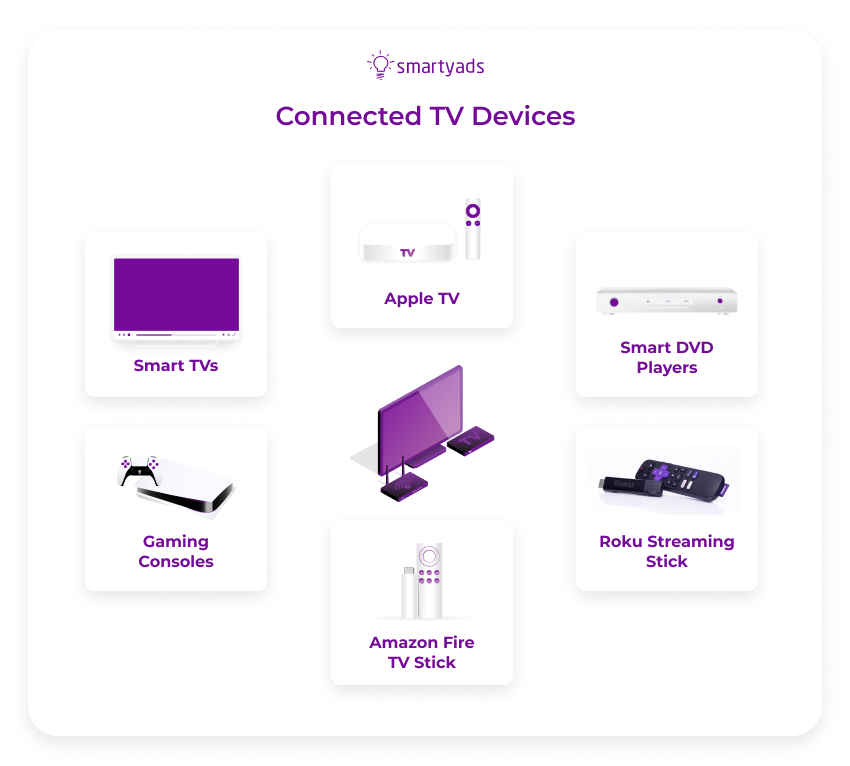
A CTV is any device that can connect to the Internet and is used to transmit or stream digital video content. CTVs are typically different from your standard televisions because they can project video content from a regular cable TV and also from digital sources, allowing for more flexibility and increased user control.
Connected TV includes smart televisions capable of connecting to the Internet or other smart gadgets, like streaming sticks or gaming consoles, that connect a regular TV to the Internet.
The nexus of CTV and advertising
Because CTV is digital-based, it offers tremendous possibilities to marketers, notably enhanced targeting and efficiency in ad delivery. The efficiency level of targeting and ad delivery on CTV, which is not obtainable with traditional TV ads, has led more advertisers to create a budget and increase their ad spend for CTV advertising. According to an IAB report, in 2021, 60% of marketers reallocated their linear TV ad budget to CTV ads.
Since 2019, when CTV viewership began rising, CTV ad spend in the United States has constantly increased, surpassing $14 billion in 2021 - a 59.9% increase from 2020. According to market projections, CTV ad spending in 2022 will reach $19.1 billion and CTV ad spend might easily exceed estimates, as major streaming providers (like Netflix) begin to allow advertising on their platforms.
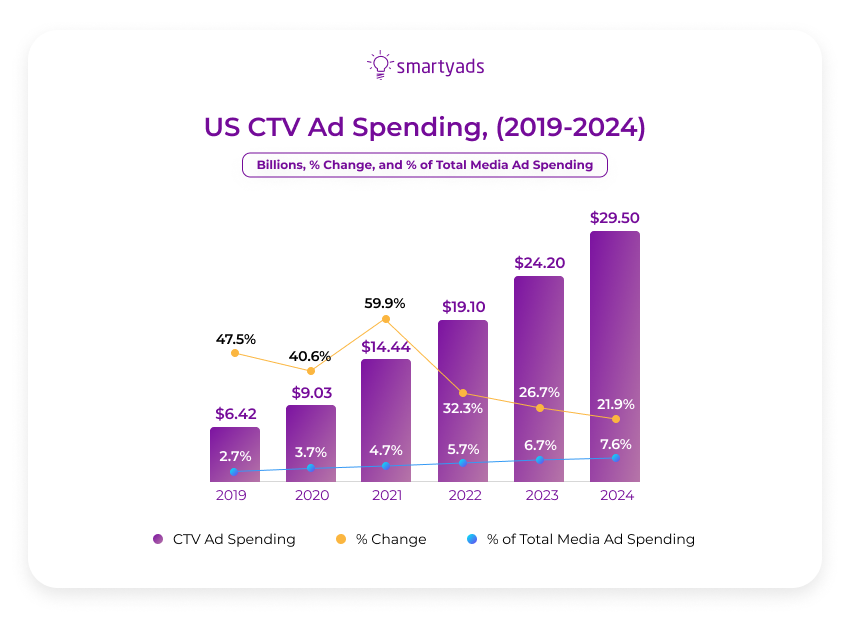
Why we believe CTV will continue to grow in 2022
Because of the various monetization models available to CTV publishers, not every CTV platform supports advertising. These monetization models include:
- Advertising Video On Demand (AVOD): AVOD platforms offer users free content in exchange for ad views. In essence, they support and serve ads to their users.
- Subscription Video On Demand (SVOD): CTV platforms adopting this model do not support ads but monetize their platform by charging a subscription fee.
- Transactional Video On Demand (TVOD): This is like the SVOD model, but, in this case, users pay-per-view and not for a duration of time.
- Hybrid model: This is a combination of the AVOD and SVOD models.
Although the AVOD and SVOD monetization models have been the most popular and most adopted, in recent times, the SVOD model is fast losing relevance, as users' preferences have evolved.
An eMarkerter study revealed that more than half (140 million people) of digital video viewers in the United States preferred AVOD platforms. Another study indicated that this advertising model generated 51.1% of the entire revenue from all models. And while AVOD platforms are fast acquiring new viewers and expanding their user base, SVOD platforms are having a tough time retaining existing users.
A prime example is Netflix. The popular streaming platform is popularly known to have adopted the subscription monetization model. Although this model seemed successful in the past, tides are changing as the SVOD is losing momentum, with users becoming increasingly dissatisfied with paying high subscription fees.
Netflix experienced a massive exodus of more than 200,000 subscribers in the first quarter of 2022 - the worst subscriber loss in a decade. The company also announced that it expects to lose another 2 million subscribers before the end of the year.
In an unexpected turn of events, Netflix's co-CEO announced that the company had concluded plans to introduce a cheaper, ad-supported plan in a bid to curtail the ongoing exodus and become more user-focused. Evidently, there has been a big shift in the CTV space, as users are tilting towards ad-supported platforms because they are more user-focused and offer more value.

What are the benefits of CTV advertising for brands and marketers?
CTV advertising presents huge opportunities for brands and advertisers, allowing for more measurable and efficient ad outcomes. With the inclusion of programmatic ad systems, which is not possible with linear TV ads, advertisers have enhanced targeting options and improved ad impression rates.
Let's consider the specific benefits of CTV ads.
CTV offers enhanced targeting
CTV ads fall under the category of digital ads; hence, ad setup and targeting options available to other digital ad formats also apply here. Most CTV systems require users to input basic data - like email addresses, locations and language - which can be curated and analyzed for targeting purposes. Targeting gets better and more defined if you employ programmatic ad tech for your CTV campaigns, as you will be able to project ads to specific audiences.
Advertisers who use CTV targeting analytics can have better outcomes by serving personalized ads to an interested audience who is more likely to engage with your campaign. Also, follow-up and retargeting are achievable, because you can identify and monitor potential customers across many devices if they view your ad on a particular CTV gadget.
Targeting possibilities on CTV include:
- Location
- Device type
- Internet and content history
- Age
- Interest
Advertising on CTV is less expensive
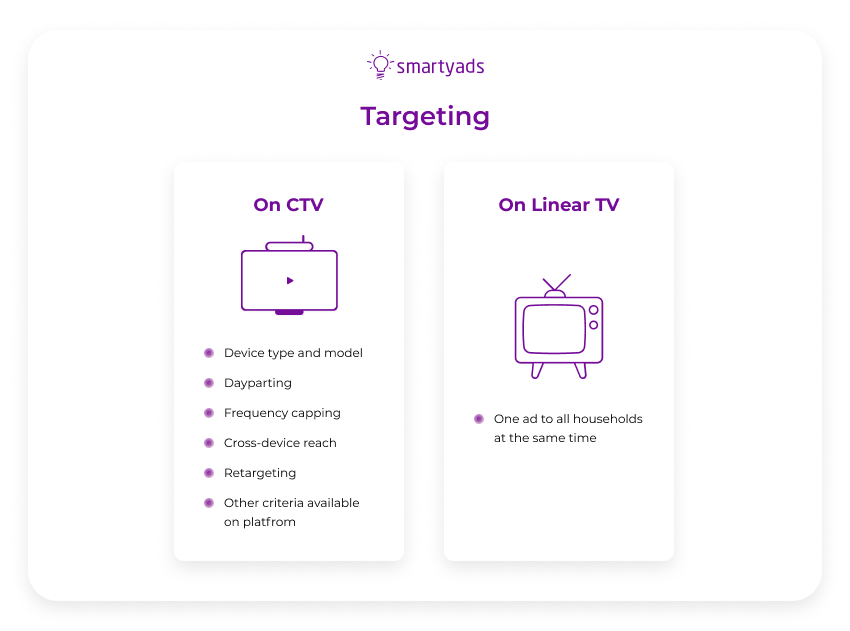
Your ad budget is better managed when you advertise on CTV, because you can choose when and where your ads will be displayed. This allows marketers to focus on the specific audiences at prime. According to research data, CTV advertisements are 53% less expensive and more effective than standard TV ads.
Offers wider reach
Consumer interest in CTV has soared, providing advertisers with greater options to reach large audiences. According to a survey conducted by ShowHeroes Group, 80% of European viewers preferred CTV to traditional television. In the UK, more than 50% of viewers watched more CTV than linear TV. Another report revealed that, in 2021, over 25% of US cable TV subscribers - almost twice the number that reportedly ended theirs in 2020 - halted their subscriptions. While there is a decline in linear and cable TV audiences, the CTV audience is increasing massively as more households adopt CTV gadgets.
CTV has a more engaged audience
Due to the convenience and variety of content options available, the CTV audience is more engaged. A survey conducted among European consumers found that CTV had an engagement rate of 82% among European consumers, compared to 69% for linear and 42% for social video. This means that a CTV ad will be seen by more people and will elicit more responses.
CTV supports multiple ad formats
Advertising on CTV allows marketers to use various ad formats - interactive video, rich media, interstitial, native ads, pop-up ads, etc. - that are not available in linear TV-based ads. Thus, marketers can achieve better results with the right format for a particular audience or campaign type.
Monitoring and measuring campaign performance
Campaign performance measurement is one of the most significant advantages CTV advertising has over linear advertising. With metrics such as view rates, impressions and conversion rates, advertisers can objectively analyze and track their campaigns. With this insight, brands and advertisers may focus on the factors that produce the best results, such as ad creative, ad display time, and demographics.
CTV targeting tips
Here are some useful CTV targeting tips to get the best results with your CTV marketing:
Leverage the benefits of experience via quality partnership(s)
To familiarize and maximize the CTV platform, you must partner with someone (or a platform) that is highly experienced with it. There are ad networks and DSPs that support CTV advertising and working with them will help to reduce waste, losses, mistakes and errors in your CTV advertising. If you wish to have the best results, don't work alone!
Focus on placing contextual ads
eMarketer predicted that US households spent 8.3 billion hours watching CTV in June 2021. According to a study, the average person spends an hour a day in front of a CTV device.
However, how much of your target audience you attract depends on how relevant your ads are across CTV platforms. In a survey conducted in the UK, 67% of respondents said they would prefer to watch CTV ads relevant to their viewing content.
Hence, for the best ROI on your CTV ads, your messages must be highly relevant to the display environment. So, using available targeting options, focus on showing your ads to an interested audience.
Focus on enhancing the user experience
A good user experience is extremely important when it comes to advertising, and CTV provides a good opportunity for advertisers to adopt a user-centric targeting strategy. To enhance user engagement, your ad media should be clear, of high quality, and delivered at the right time of the day, and on a suitable frequency. This will provide a positive user experience that translates into increased engagement and conversion.
6 must-do’s for advertisers considering CTV advertising
If you intend to run CTV ads, here are 6 important points you must consider.
Firmly understand your target audienceh3>
Understanding your target audience's behaviors, activities, needs and preferences are essential to improving your CTV ad performance. So, be creative and know the devices that your target audience frequents the most, as well as where, when and how they interact with ads.
Be consistent with your branding
Don’t switch brand artilleries, such as logo, colors, and URL, and expect the same quality of response with your advertorial. You must be consistent to get the best results. Also, adjust ad sizes and placements to help keep your audience in tune with your message.
Implement brand safety measures
Brand safety measures are deliberate steps taken to protect your brand from negative user perceptions caused by offensive or improper publisher content. Make sure that where you place your ad content is brand-safe and appropriate. Reputable CTV platforms ensure that their traffic corresponds to such criteria.
Go beyond TV screens
It is best practice to tailor your CTV ads to display on various screen sizes other than TV screens, like laptop screens or desktop screens. This allows you to maximize your CTV ad reach and outcomes.
Include an audio call-to-action (CTA)
CTV ads may not be clickable on all screens; hence, it is good practice to include the call-to-action (CTA) so that the audience can take the appropriate action that you want to be taken.
Limit the frequency of your ad
Showing your ads too often could hamper your advertising intent, as most people dislike being shown too many ads. So, showing only an appropriate number of ads per time/day is a highly recommended best practice.
FAQ
Companies and advertisers that are new to CTV advertising are often perplexed by some of the concepts. Consequently, we've compiled a list of the most frequently asked questions and provided answers in this section.
Q: Is CTV the same as OTT?
A: No, but they are related.
OTT refers to any video content that is transmitted via the Internet (rather than via cable or satellite). CTV is one way of viewing over-the-top (OTT) content. CTV exclusively relates to Internet-enabled televisions. This means that the TV is directly connected to the Internet, such as a Samsung Smart TV, or that an Internet device is connected to a TV to enable a web connection. Gaming consoles and streaming sticks (such as Chromecast and FireTV) are examples of devices that enable Internet connection on a TV.
Q: What measurement do you use for CTV ads?
A: CTV ads are typically not clickable, so CTRs do not apply. Here are some popular measurement metrics for CTV:
- Average campaign impression: The average number of impressions for every campaign.
- Average campaign frequency: The average number of times a unique household was exposed to a campaign.
- Average cost per unique reach: This is the total cost for each reach.
- Total reach: Number of unique households that see a campaign.
- Unique reach: Number of unique households reached by a single publisher.
Completion rate: The number of times a commercial was seen all the way through, which reflects the number of people who stayed through the entire commercial.
Q: Can I run a CTV campaign using a DSP
A: Yes, you can!
CTV targeting is more like targeting done for other types of digital advertisements. Many programmatic DSPs also have the capacity to deliver CTV ads. Your ad can be delivered to a highly specific target demographic, just like other digital advertisements. You aren't just purchasing ad inventories, hoping that your target demographic will see them - with every ad served, you appeal to audiences more likely to be interested in your product or service.
Q: What are the types of CTV ads?
A: The most popular CTV ads include videos: mid-rolls, pre-rolls, and post-rolls.
Q: Will cable television be phased out in favor of CTV?
A: Cable or linear television is increasingly being watched on connected television sets, and it will progressively be streamed through the Internet. As a result, linear viewing is gradually transitioning to CTV viewing.
Conclusion
Linear TV viewing is fast-waning, as most people are transitioning to CTV. You can target both the older generation, who are used to linear TV but prefer the flexibility of CTV, and a younger, digital-savvy generation. Connected TV advertising offers an exciting opportunity for advertisers to expand their reach and target a wide and diverse audience.
Need to start effective CTV campaigns, all you need is SmartyAds DSP!

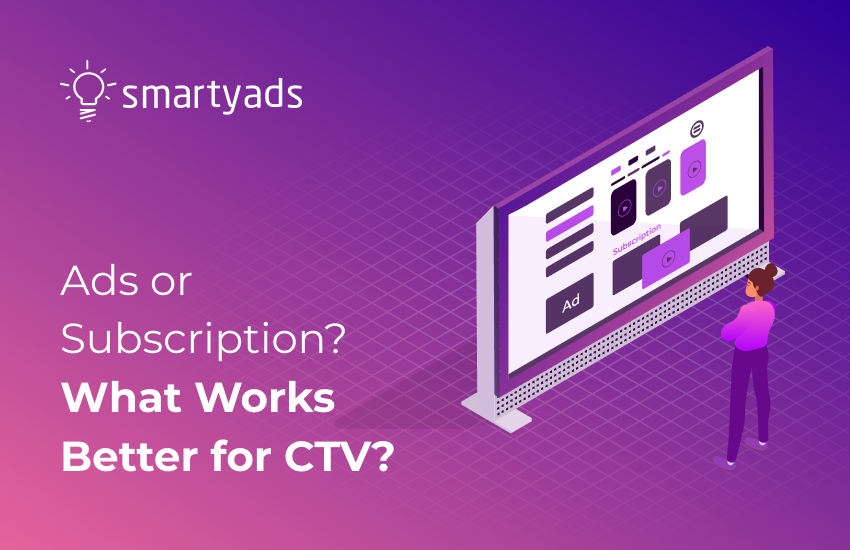
.webp)


